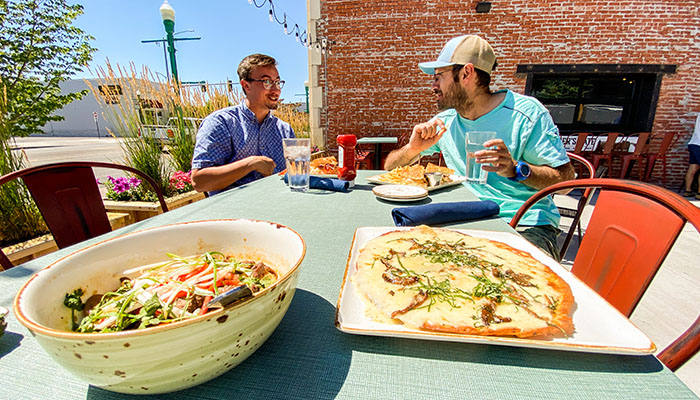Have you ever wondered what sets Twin Falls cuisine apart from other regional culinary traditions? The magic lies in the local ingredients that reflect the area’s rich agricultural heritage and natural bounty. These ingredients not only define the flavors of this city but also tell a story of the region’s culture and history.
The culinary landscape of any Twin Falls restaurant is a tapestry woven from the region’s rich agricultural heritage, sustainable farming practices, and diverse cultural influences. These elements, combined with the bounty of seasonal ingredients, create the distinct flavors that define the city’s vibrant cuisine. Let’s explore the unique ingredients that make Twin Falls cuisine special and how they contribute to the region’s distinctive culinary identity.
The Rich Agricultural Heritage of Twin Falls
Local Produce
- Potatoes: Idaho is synonymous with potatoes, and Twin Falls is no exception. The region’s fertile soil and ideal growing conditions produce some of the best potatoes, which are a staple in many local dishes.
- Dairy Products: The city is home to numerous dairy farms that produce high-quality milk, cheese, and butter. These dairy products are integral to the local cuisine, adding richness and flavor to various dishes.
- Apples and Pears: The Snake River Valley’s climate is perfect for growing apples and pears. These fruits are used in everything from fresh salads to decadent desserts, showcasing their versatility and sweetness.
Sustainable Farming Practices
- Organic Farming: Many farms in Twin Falls practice organic farming, ensuring that the produce is free from harmful pesticides and chemicals. This commitment to sustainability enhances the quality and flavor of the ingredients.
- Farm-to-Table Movement: Any Twin Falls restaurant sources its ingredients directly from local farms. This supports the local economy and ensures that diners enjoy the freshest and most flavorful food.
Unique Ingredients in Twin Falls Cuisine
Trout and Other Freshwater Fish
- Snake River Trout: The city is known for its freshwater fish, particularly trout from the Snake River. This fish is celebrated for its delicate flavor and is often featured in local seafood dishes.
- Catfish and Bass: Other freshwater fish, such as catfish and bass, are also popular in the region. These fish are typically prepared in a variety of ways, including grilling, frying, and baking, highlighting their versatility.
Specialty Meats
- Lamb: The region’s pastures provide ideal conditions for raising lamb, which is a popular ingredient in Twin Falls cuisine. Lamb dishes often feature local herbs and spices, creating a unique and flavorful experience.
- Beef: High-quality beef from local ranches is a cornerstone of the city cuisine. Whether it’s a juicy steak or a hearty beef stew, local beef is renowned for its tenderness and rich flavor.
Fresh Vegetables and Herbs
- Asparagus and Corn: Twin Falls’ agricultural diversity includes a wide range of vegetables, with asparagus and corn being particularly notable. These vegetables are often featured in seasonal dishes that highlight their fresh flavors.
- Local Herbs: Sage, rosemary, and thyme grow abundantly in the region and are used to enhance the flavors of various dishes. These herbs are often harvested fresh, adding an aromatic and flavorful dimension to the cuisine.
So, celebrate the local ingredients that make Twin Falls’ food so special. Whether you’re a resident or a visitor, exploring the region’s culinary offerings will give you a deeper appreciation of its rich traditions and delicious flavors. So, next time you dine in this city, savor the taste of its unique ingredients and the stories those ingredients tell.

